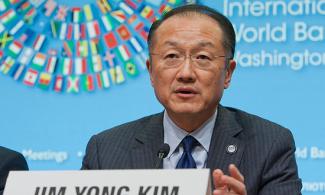
“Racial discrimination in the World Bank is a far more systemic and serious issue than anyone is willing to admit.”
A former World Bank employee has written a report detailing the problem of endemic racism and lack of accountability within the Bank.
The author, who anonymously published the piece in Pambazuka News, was a member of the Bank’s Senior Management Team and of various working groups on discrimination within the Bank.
The author explained that racism in the World Bank has been an ongoing problem that Bank officials have swept under the rug.
“Racial discrimination in the World Bank is a far more systemic and serious issue than anyone is willing to admit,” the author stated.
“Successive Presidents have treated it as a can of worms that’s best kept closed. The Bank’s Administrative Tribunal exists to keep the can closed with a judicial seal and to shield senior management from accountability,” the author said, adding that the President protects the Tribunal from criticism.
The author said that while s/he was a member of the Team for Racial Equality, the group recommended to the President that the Bank establish an external mechanism, such as external arbitration, for dealing with racial grievances rather than going through the Bank’s Administrative Tribunal.
While the Grievance Process Review Committee, tasked with examining the Tribunal and the Bank’s internal justice system in general, “looked favorably” at the Team’s proposal, it decided to defer the recommendation for “future consideration.” According to the author, various Committee members told him that the Committee was “under pressure to avoid criticizing the Tribunal and proposing external arbitration.”
Bank President James Wolfensohn avoided confronting the Tribunal and implementing external arbitration. In 2001 Staff Association newsletter, he acknowledged that the Staff Association discovered “several serious problems with the structure and record of the Tribunal,” and that the senior management of the Bank would “give the [Team for Racial Equality’s] proposals serious consideration.” However, no concrete steps were taken by
Mr. Wolfensohn and other higher-ups to reform the Bank’s internal justice system.
In 2013, Bank President Jim Yong Kim similarly avoided judicial reform. Mr. Kim met with African-American, African, and Caribbean associations who requested that the Bank establish a “high-level external commission” and use “external arbitration for racial discrimination claims.” However, the Bank President struck down both requests.
Under Mr. Kim, the Bank conducted a “comprehensive internal assessment” focused on race relations and the Bank’s judicial system. The report, the author explained, was “unflattering at best.”
It identified a 2009 incident as a “blatant and virulent case of racism,” which was then reviewed in 2010 and dismissed. The report also found that the internal justice system was “not open to those who challenge the status quo” and “lacking of accountability to discriminated groups.”
In light of this, Mr. Kim had the report edited and released for internal use only. The most heavily edited part contained criticisms of the Tribunal, according to the author.
To this day, the Bank remains reluctant, at best, to challenge its endemic racism and flawed judicial system. Doing so would require the leadership, starting with the President, to change the culture of the Bank by directly confronting those most resistant to change.
